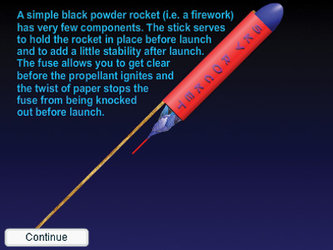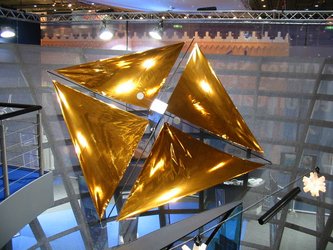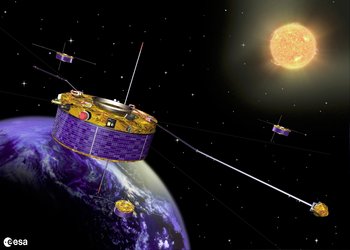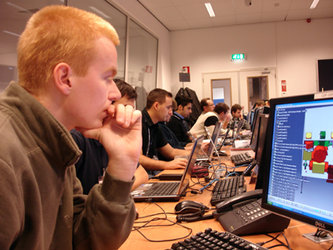Ion motors
Rocket motors need two things, propellant mass and energy. In a traditional chemical rocket they come from the same place. But what would happen if we could separate the two functions and if we could have access to an almost limitless supply of energy? The result would be a revolution in spacecraft propulsion and that revolution has already arrived.
Ion engines work by stripping electrons off of individual atoms and then accelerating the resulting ions in an electric or magnetic field. Still using Newton’s third law, the force applied to the ion in one direction must equal the force on the spacecraft in the other direction. The energy for the ionisation and the acceleration no longer needs to come from a chemical reaction; instead we could use solar cells or even a nuclear power supply.
Here however lies the problem with ion thrusters, given the mass restrictions of a small spacecraft they just cannot carry enough solar cells or a large enough nuclear power plant to compete with the power generation possible with a chemical rocket. A chemical rocket’s performance is limited by how much propellant (and thus energy) it can carry (it is energy limited) but all that energy can be released in a very short time (and so it is not power limited). A solar powered ion thruster however can carry on producing energy until the Sun stops shining (it is not energy limited) but the rate at which it can generate energy is limited by the size of its solar cells (it is power limited). In fact the amount of thrust that a typical ion motor can produce is equivalent to the weight of a sheet of paper.
The result is that the two types of motor have very different propulsion tactics. The chemical rocket makes use of one enormous burn, maybe a few minutes, at the beginning of the mission in order to get the necessary speed up, after all, there’s no point in taking all that extra weight in propellant tanks with you. The ion motor on the other hand keeps going at a low thrust for days or even months. Like the tortoise it will overtake the hare, but this tortoise will eventually be travelling far faster than the hare can ever run! Unfortunately the thrust of an ion engine is so low that it will never be possible to use it to launch a satellite from the Earth, only to power it once it is in orbit. This is one tortoise that needs a lift to the starting post.
Animation of comparison of thrust & velocity vs time:












